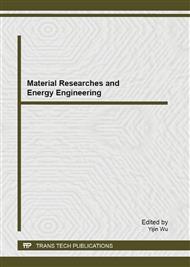p.455
p.461
p.467
p.474
p.480
p.487
p.495
p.501
p.507
Experimental Investigation on Thermal Performance of Flat Plate Heat Pipe with Intersected Micro-Grooves
Abstract:
A copper-water flat plate heat pipe with intersected micro-grooves was developed for cooling electronic devices in this paper. The effects of heat flux, working fluid filling ratio and inclination angles on thermal performance of the flat plate heat pipe was tested and investigated. The laboratory tests show the optimal filling ratio of the heat pipe is about 65%. Excellent thermal performance is also observed in unfavorable titled positions including vertical and anti-gravity orientation at 65%. The smallest overall thermal resistance is obtained in horizontal position and the maximal thermal resistance is observed in vertical position. The influence of inclination angles on thermal performance of the heat pipe in both axial direction and radial direction is also investigated. As the heat pipe is tilted, the ability of temperature leveling in radial direction is enhanced, nevertheless, the capacity of heat transfer in radial direction decreased at the same time.
Info:
Periodical:
Pages:
480-486
Citation:
Online since:
September 2013
Authors:
Price:
Сopyright:
© 2013 Trans Tech Publications Ltd. All Rights Reserved
Share:
Citation:


